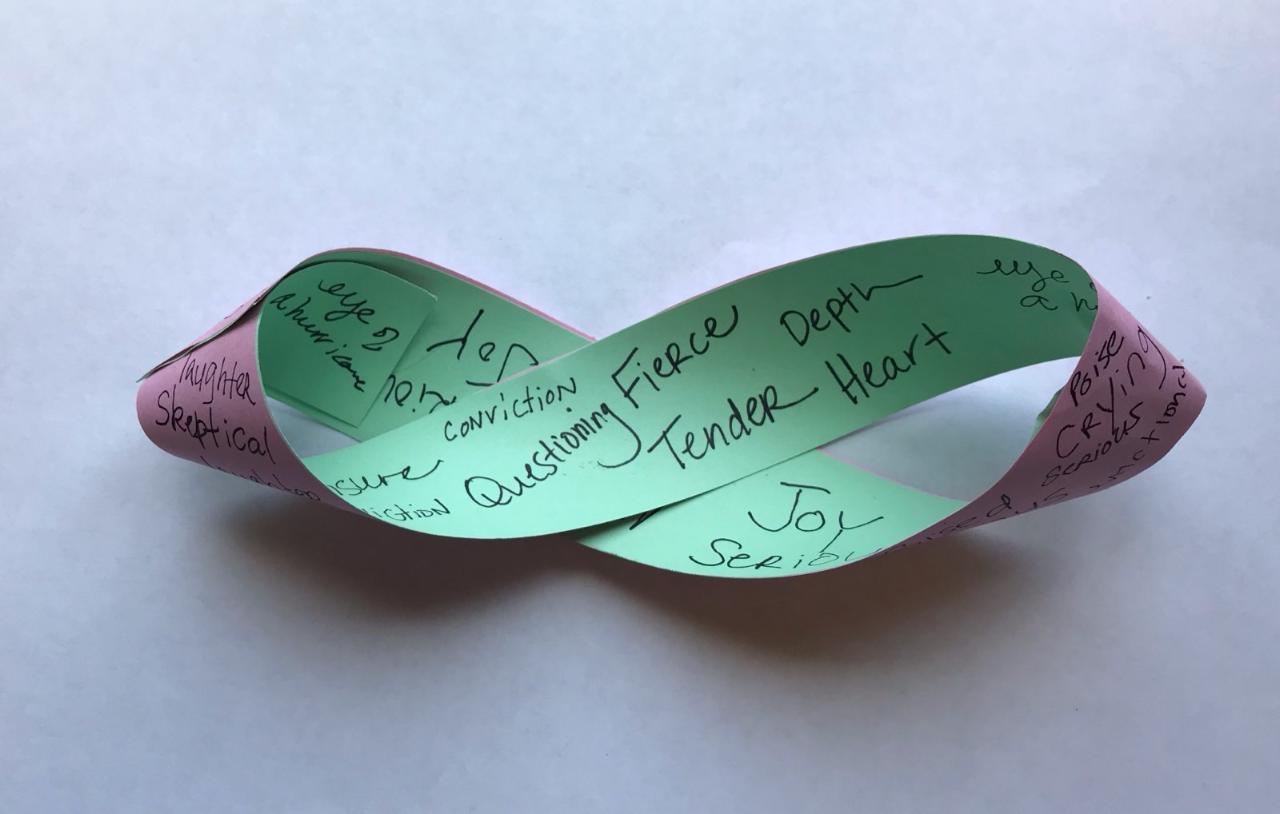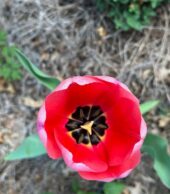Recently, my long-time friend and colleague, Eily Marlow and I developed a day-long workshop called Being Real: Practicing Humility, Courage, and Authenticity in Everyday Life. The stories and the challenges that Eily and I shared as we were preparing for the workshop have stayed with me and continued to evolve over time. So have the lessons and stories of those who participated in the workshop. In this series of blog posts, I am sharing some of those lessons and reflections in the hopes that a wider circle of people will benefit from what we have learned. This is part 2 of 4. Click here for part 1, part 3, or part 4 (as they are released).
Being Real (Part 2):
Bridging the Gap Between Our Inner & Outer Lives
I want to learn how to hold the paradoxical poles of my identity together, to embrace the profoundly opposite truths that my sense of self is deeply dependent on others dancing with me and that I still have a sense of self when no one wants to dance. ~ Parker Palmer
As part of our planning for our recent Being Real workshop, my friend Eily Marlow and I discussed our personal struggles with courage and authenticity. During our conversation, we explored the tension that arises when we know internally that something is true, but feel unable to express that truth with others. Like most people, Eily and I both sometimes experience a disconnect between how we understand our innermost selves and how we present those selves to the world. To reduce the gap between our inner and outer lives, we need relationships and practices that both challenge us and support us.
In this video, Parker Palmer describes how the tension between our inner and outer selves develops early in life. As children, he says, we learn to hide parts of ourselves in order to feel safe in certain social situations. When interactions teach us that it isn’t socially acceptable to say or do certain things, we learn to conceal those things. By the time we become adults, we have had years of practice reflexively hiding parts of ourselves. Palmer uses the Möbius Strip to illustrate how our private and public lives are not simply different sides of the same coin. Rather, like the inner and outer sides of a Möbius Strip, our inner and outer lives intermingle and interrelate in creative and surprising ways.
Eily and I knew that we wanted to invite people into some reflection with Palmer’s Möbius Strip concept during our workshop, so we engaged an exercise personally as part of our planning process. The exercise involved writing on two sides of the same strip of paper. On one side, we each wrote attributes of our individual inner lives. On the other, we wrote attributes of our outer lives.
Embracing Personal Contradictions
On the outer side of my Möbius Strip (about my public life) I wrote: skeptical, religious, poised, serious, laughter, crying easily in public, not easily shocked. On the inner side of my Möbius Strip (about my private life), I wrote: serious, joy, fierce, tender, fear, courage. Some of these descriptions might seem contradictory. But each of these words describes an authentic part of who I am. I am both skeptical AND religious. I am poised AND I cry easily in public. I am often both fearful AND courageous at the same time. Eily listened carefully as we reflected together. She said, “All of those things are true, but somehow you hold them together and they all make sense. You are like a walking paradox.”
From Eily’s observations, I was able to receive the gift of a new way of understanding myself: that I hold together multiple, seeming contradictions. This is part of how I move through the world. Multiple things are true about me, as multiple things are true about each of us. At different times and in different settings, we each share distinct “selves” (or aspects of ourselves) with the world and we keep other aspects of ourselves hidden.
Trusting Relationships and Safe Spaces
There are usually good reasons why we keep some parts of ourselves more private. Social pressures often work against our desire to really open up. Other people do not always meet our grief, shame, or even our quirkiness with understanding. When people do not respond to our true selves with care, we can feel vulnerable or even ashamed, uncertain about what to share and how.
This is why it is such a gift when a trusted person can reflect back to us and remind us who we are and who we want to be. Compassionate listening from trusted people can bolster our courage to live more authentically. These companions can be friends, family, spiritual directors, counselors, clergy, or members of a recovery/support group.
In my life, Eily is one of the people who helps me remember who I am. But, I have also experienced meaningful connections in workshops and support groups shortly after meeting people. A space for meaningful sharing can be created in a relatively short period of time. Certainly, it is not the same as a long-term friendship, but people we do not know well can bring a fresh perspective to how we understand ourselves. During the Being Real workshop, I witnessed people genuinely supporting one another as they shared in small groups. Safe spaces and trusting relationships can take shape over a long friendship. They can be cultivated in long-term settings like a spiritual direction relationship. And they can take shape in shorter windows like one-day workshops. The keys, in my experience, are having clear expectations, no pressure to share more than someone wants to share and being brave about meeting each other in mutual vulnerability.
Minding the Gap
What I took away from our Being Real workshop experience was that it is ok (even good) to have some gap between our inner and outer lives, as long as we are intentional about it. As much as possible, we want to be conscious about what parts of ourselves we share and how. It is healthy to keep some feelings and experiences to ourselves and to share some things only privately in prayer. The gap between our inner and outer lives only becomes a problem when we are hiding things that we really wish we could share more openly or if we do not feel like we are living with integrity.
If you are looking for a simple, concrete way to explore the relationship between your inner and outer lives, I would recommend trying the exercise that follows. It can be fruitful to simply do the exercise by yourself. If you have a willing partner, it can also be valuable to listen to another person’s insights about you and to practice listening well to someone else. I offer you my blessing as you explore and embrace the paradoxes that help hold your unique and beautiful identity together.
Möbius Strip Exercise
Take a strip of paper (If you want to make an actual Möbius Strip, the paper would be approximately 11” x 1”, but you can do this as a simple journal exercise.) On one side, write about your outer life. What roles do you play? What do most people see when they look at you? On the other side, write about your inner life: values, beliefs, dreams, private identities.
Outside (explore some or all of these questions)
- What words might people use to describe you?
- How do you contribute or have impact on your community?
- What characteristics do people see when they look at you?
- What roles do you play?
Inside (explore some or all of these questions)
- What words are most important when you describe your true self?
- What would someone not know by looking at you?
- What are some of your underutilized gifts or something you have always dreamed of doing?
- I am embarrassed to tell people…
Reflection Questions
- Spend some time reflecting about what surprised you about what you wrote.
- Where are the differences between the inside and the outside of your Möbius Strip? What do they have to teach you?
- Where are the connections, overlaps, and synchronicities between the inside and the outside of your Möbius Strip? What do they have to teach you?
- Where are the through lines that help you see the connections between your inner and outer lives?
Connecting Your Möbius Strip
Once you have written on both sides, take one end in your left hand and one end in your right. Twist the right hand ½ turn, then pull the strip toward you and connect the ends with a piece of tape. What you should see is a multi-dimensional image of your inner and outer self, flowing as one (see image at top).
 Learn more about the Benedictine commitment to learning.
Learn more about the Benedictine commitment to learning.
Preview all the upcoming retreats and workshops.
Learn more about Kiely Todd Roska.






